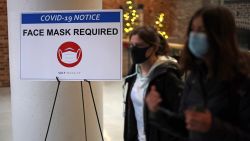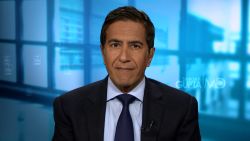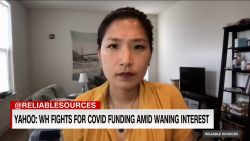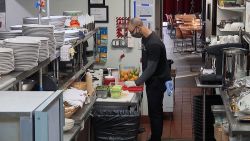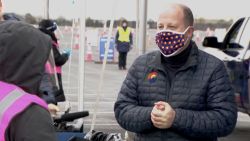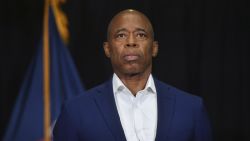During the depths of the pandemic, all 1,400 Orangetheory Fitness studios around the world went dark. The future looked bleak for this fitness brand known for its intense indoor workout classes, along with the entire gym industry.
But Orangetheory survived. And now it’s pushing ahead on expansion plans.
It was a scramble, but the privately held company kept its studios afloat by helping them tap Covid-19 relief funds, renegotiate with landlords and launch alternative workout options including a virtual app.
“Without that really tough partnership and working together, we might not have been able to sustain the whole year,” Dave Long, Orangetheory co-founder and CEO, told CNN Business.
That was the fear earlier this year, said Long, who recalled the spring as a “high-stress period every single day.” Rival fitness brands including Gold’s Gym, 24 Hour Fitness and the owner of New York Sports Club all filed for bankruptcy.
With rent payments piling up, Orangetheory franchisees furloughed their studio staff and corporate headquarters laid off 20% of its workforce. Member accounts were “frozen” as gym rats turned to Peloton, took up running or turned their homes into makeshift gyms.
Long and his team got to work on a virtual workout app while helping studio owners access government aid and negotiate deals with their landlords.
Months later, despite the worsening pandemic, about 90% of Orangetheory 90% studios are open in some capacity, relying on social distancing, masks, cleaning, smaller classes and outdoor workouts where weather permits.
Orangetheory is optimistic enough about the future that it’s opened nearly three dozen studios since August, most of them in the United States. Some of these were slated to open this spring and summer but were delayed by health restrictions.
Only two Orangetheory studios have permanently shut down, a stark contrast to the tens of thousands of restaurants that have not survived the pandemic.
“We always were confident that if any fitness brand could pull through, we would be the one,” Long said.

‘Hunkering down’
Launched in 2010, Orangetheory has issued more than 1,000 franchise licenses in 11 countries. The brand is known for its high-intensity, hourlong workouts. Members wear heart rate monitors as they use rowing machines, treadmills and free weights, and screens throughout the studio display everyone’s heart rates.
The goal is to spend at least 12 minutes in the orange and red heart-rate zones to boost metabolism and burn calories long after the workout – hence, Orangetheory.
Despite the new studio openings, though, Orangetheory itself is hardly running “all out,” as the company’s trainers would put it.
Depending on the location, between 20% and 40% of membership accounts remain frozen. Orangetheory still has about 10% fewer corporate jobs than before the pandemic. And it faces new new challenges as state governments relaunch health restrictions.
California imposed a regional stay-at-home order Sunday mandating that gyms in counties where Covid-19 cases are rising “stop indoor operations,” although outdoor gyms may continue to operate with social distancing.
“We know we’re not out of the woods yet. There might be another three or four months of really hunkering down,” Long said.
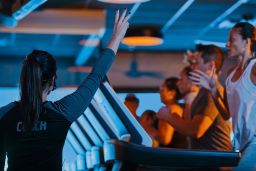
PPP helped – but more aid is needed
To get through the crisis, some gym owners have relied on help from the federal government. Orangetheory franchisees took out forgivable loans from the Paycheck Protection Program, which lent more than $500 billion to small businesses between April and August. However, PPP stopped taking applications in August.
“It was definitely a helpful stopgap. Unfortunately, because of the length of what’s happened, it really wasn’t enough,” said Long. “Another round would not just sustain Orangetheory, but fitness brands in general through another wave.”
The bipartisan relief package being negotiated in Washington this week includes funding for additional PPP loans.
Though coronavirus vaccines could be authorized within days, Long said Orangetheory is modeling very conservatively for 2021. The goal is for revenue to total 55% to 65% of 2019 levels.
“We’ll still be in a position to bounce back even if this extends through the back half of next year,” Long said.
Can virtual training substitute for in-person workouts?
To get through the winter, Orangetheory will lean heavily on technology.
In Canada, the company recently rolled out OT Live, a virtual platform that allows members to get real-time training and motivation from coaches who can see their workouts and even their heart rates. Members can choose who in the virtual class can see them.
“It gives you the same flavor and feel of being in a studio,” said Long. “Our bread-and-butter is live coaching. Members want to be accountable for a certain time and be motivated and supported.”
OT Live, which costs the same amount as a regular class, is launching in California next amid the return of health restrictions there. Long said the long-term strategy is to bundle virtual classes as part of the regular membership.
As for in-person classes, Orangetheory is stepping up cleaning procedures, requiring social distancing, shrinking class sizes and strongly urging members to wear masks in studios.
Wearing masks could make an already challenging fitness routine that much tougher, so Long said members are encouraged to “slowly ease” back into their workouts with them.
“We’re giving people options so if they don’t feel safe to come back, they can just wait for as long as they need to until they feel ready,” he said.
Orangetheory is betting people will eventually overcome their health concerns, especially as they look for release.
“The last nine months have been the most stressful time of most people’s lives,” Long said. “People need exercise and wellness more than ever.”




